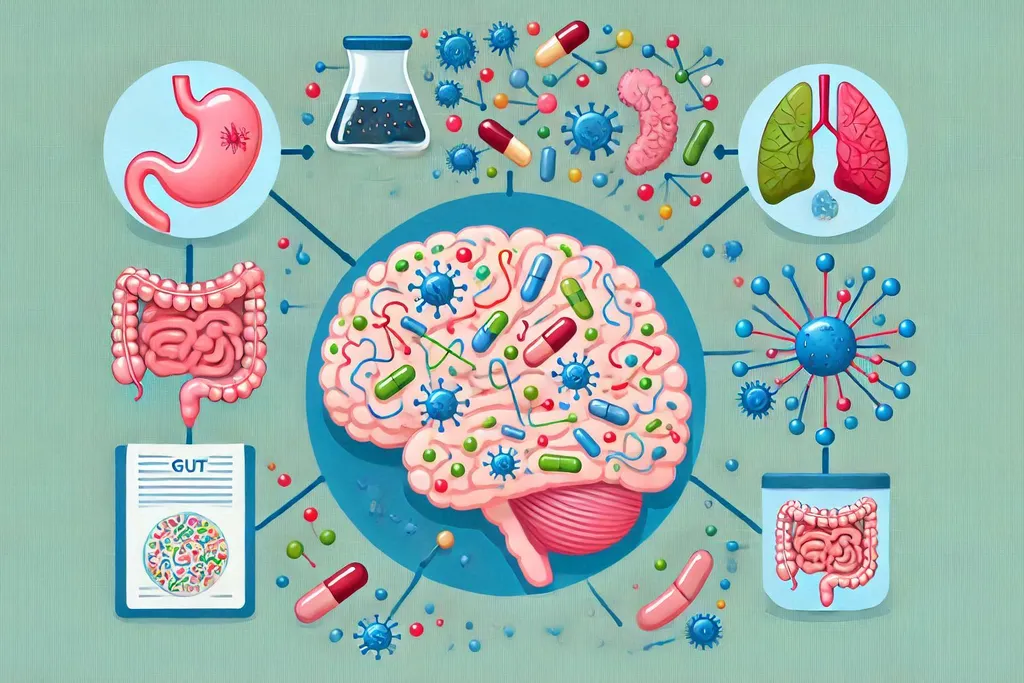A neuroimaging study has revealed a connection between gut microbiota composition and brain function changes.

The findings indicate that elevated levels of specific proinflammatory gut bacteria are associated with altered functional connectivity in the hippocampus—a critical brain region involved in memory and emotional regulation. Published in Translational Psychiatry, this research underscores the growing understanding of the gut-brain axis as a potential factor in depression.
The hippocampus, a small, seahorse-shaped structure in the temporal lobe of the brain, plays an essential role in memory formation, learning, and spatial navigation. As part of the limbic system, it regulates emotions and links memories with emotional responses. Its functions include converting short-term memories into long-term ones and facilitating the recall of past experiences.
In cases of depression, structural and functional changes in the hippocampus are often observed, such as reduced volume or impaired neurogenesis. Chronic stress and elevated cortisol levels, frequently associated with depression, can harm hippocampal neurons, inhibiting their growth. These changes contribute to memory challenges and emotional dysregulation. A smaller or less active hippocampus is believed to play a role in persistent negative thought patterns and difficulties with emotional regulation—key features of depression. Additionally, diminished hippocampal function can hinder the acquisition and application of stress-coping mechanisms.
This research, led by Shu Xiao and collaborators, sought to examine how functional connectivity alterations in hippocampal subregions correlate with gut microbiota composition in individuals with major depressive disorder.

Over recent decades, a bidirectional communication pathway between the brain and gut microbiota—the vast community of microorganisms residing in the gut—has been identified. Known as the microbiota-gut-brain axis, this pathway plays vital roles in various physiological processes, including psychological functioning. Evidence suggests that gut microbiota composition may influence the development and progression of major depressive disorder (MDD).
For the study, 49 adults diagnosed with MDD and 44 healthy individuals as controls were recruited. Participants, aged between 18 and 55, underwent medical and psychiatric screening to ensure uniformity. None of those in the MDD group were receiving medication at the time. Gut microbiota composition was assessed using fecal samples, and resting-state magnetic resonance imaging (MRI) scans were conducted to examine hippocampal functional connectivity, which reflects communication among brain regions during rest.
Analysis revealed notable differences in gut microbiota composition between the two groups. A reduced species richness, indicating a lower variety of gut bacteria, was observed among those with MDD. However, the diversity index, which also considers the relative proportions of bacterial species, showed no significant difference.
Crucially, an increased presence of proinflammatory bacteria, particularly from the Enterobacteriaceae family, was identified in individuals with MDD. In contrast, a reduced abundance of beneficial bacteria such as Prevotella, known for producing short-chain fatty acids (SCFAs) that promote gut health and mitigate inflammation, was observed.
https://doi.org/10.1038/s41398-024-03012-9
Abstract
Accumulating evidence has revealed the gut bacteria dysbiosis and brain hippocampal functional and structural alterations in major depressive disorder (MDD). However, the potential relationship between the gut microbiota and hippocampal function alterations in patients with MDD is still very limited. Data of resting-state functional magnetic resonance imaging were acquired from 44 unmedicated MDD patients and 42 demographically matched healthy controls (HCs). Severn pairs of hippocampus subregions (the bilateral cornu ammonis [CA1-CA3], dentate gyrus (DG), entorhinal cortex, hippocampal–amygdaloid transition area, and subiculum) were selected as the seeds in the functional connectivity (FC) analysis. Additionally, fecal samples of participants were collected and 16S rDNA amplicon sequencing was used to identify the altered relative abundance of gut microbiota. Then, association analysis was conducted to investigate the potential relationships between the abnormal hippocampal subregions FC and microbiome features. Also, the altered hippocampal subregion FC values and gut microbiota levels were used as features separately or together in the support vector machine models distinguishing the MDD patients and HCs. Compared with HCs, patients with MDD exhibited increased FC between the left hippocampus (CA2, CA3 and DG) and right hippocampus (CA2 and CA3), and decreased FC between the right hippocampal CA3 and bilateral posterior cingulate cortex. In addition, we found that the level of proinflammatory bacteria (i.e., Enterobacteriaceae) was significantly increased, whereas the level of short-chain fatty acids producing-bacteria (i.e., Prevotellaceae, Agathobacter and Clostridium) were significantly decreased in MDD patients. Furthermore, FC values of the left hippocampal CA3- right hippocampus (CA2 and CA3) was positively correlated with the relative abundance of Enterobacteriaceae in patients with MDD. Moreover, altered hippocampal FC patterns and gut microbiota level were considered in combination, the best discrimination was obtained (AUC = 0.92). These findings may provide insights into the potential role of gut microbiota in the underlying neuropathology of MDD patients.